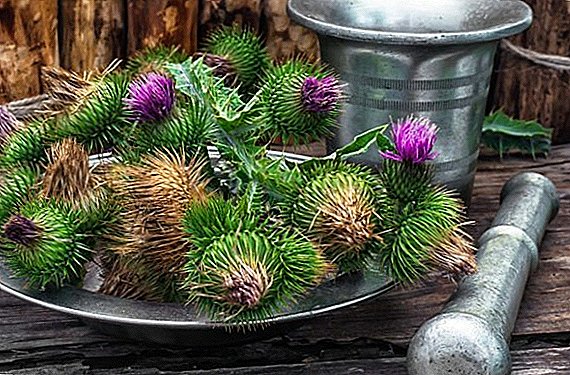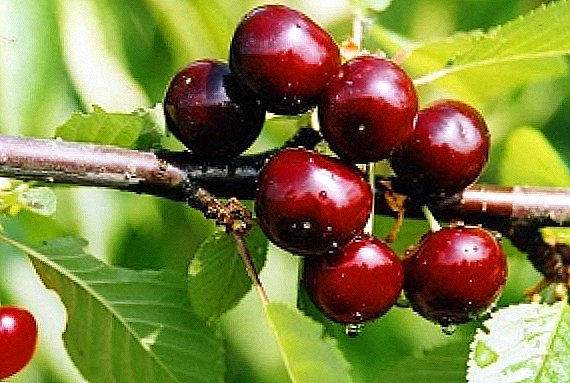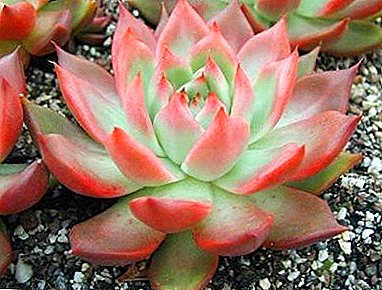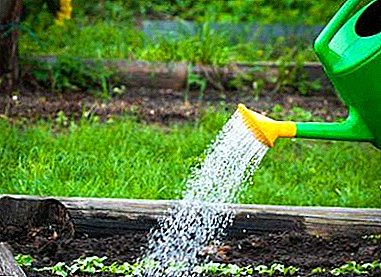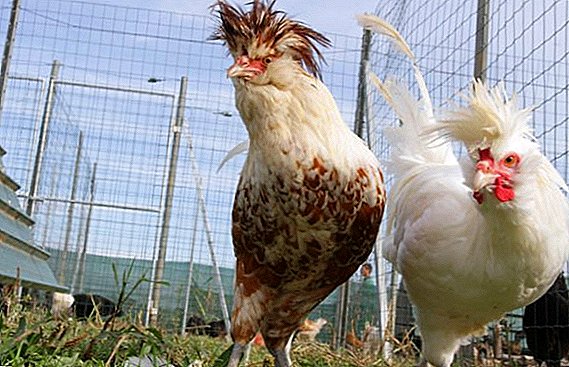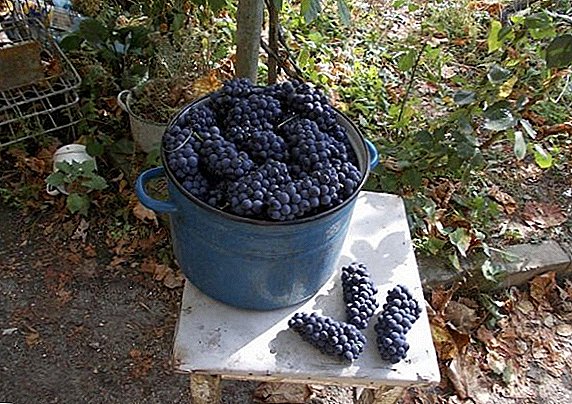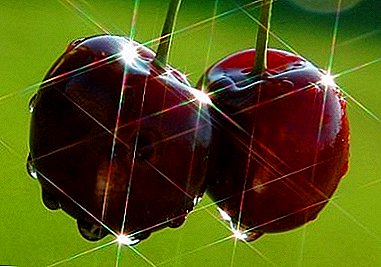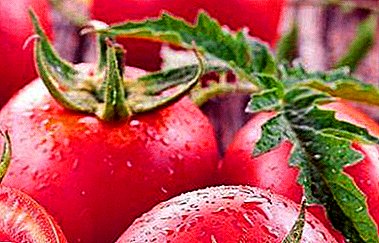
All lovers of tomatoes have different preferences. Someone likes big and sweet, while others are looking sour. Some like the classic cream, while others need pink giants.
For anyone who wants to get a high yield and has a greenhouse, there is a very good variety, it is called "Raspberry sweetness". This tomato has proven itself as fruitful and resistant to diseases.
Read in our article a detailed description of the variety, its characteristics and characteristics of cultivation, resistance to diseases.
Tomato Raspberry sweetness: variety description
| Grade name | Raspberry sweetness |
| general description | Early ripe determinant variety for cultivation in greenhouses and open ground |
| Originator | Russia |
| Ripening | 90-95 days |
| The form | Rounded, smooth |
| Colour | Red |
| Average tomato mass | 100-120 grams |
| Application | Universal |
| Yield varieties | 4-5 kg from a bush |
| Features of growing | Agrotechnika standard |
| Disease resistance | Disease rot disease is possible |
 "Raspberry sweetness" enjoys good prestige both among novice gardeners and large producers of vegetables.
"Raspberry sweetness" enjoys good prestige both among novice gardeners and large producers of vegetables.
This is an early variety, from the time the seedlings are planted to the collection of the first fruits, 90-95 days pass. The plant is a standard, determinant. About indeterminantny grades read here. The bush itself is of medium height and can reach up to 130 cm.
This variety is recommended for cultivation in unprotected soil and in greenhouse shelters. It has high resistance to late blight.
 Read also on our website: How to care for early-season varieties? How to get the best harvest in the open field?
Read also on our website: How to care for early-season varieties? How to get the best harvest in the open field?How to grow delicious tomatoes all year round in greenhouses? What varieties have good immunity and high yield?
Specifications
Ripened fruits are red or dark red in color, rounded in shape, even, of equal size. The pulp is dense, fleshy. The first tomatoes can reach 130 grams, but later from 100 to 120 grams.
| Grade name | Fruit weight |
| Raspberry sweetness | 100-120 grams |
| Garden Pearl | 15-20 grams |
| Frost | 50-200 grams |
| Blagovest F1 | 110-150 grams |
| Premium F1 | 110-130 grams |
| Red cheeks | 100g |
| Fleshy handsome | 230-300 grams |
| Ob domes | 220-250 grams |
| Red dome | 150-200 grams |
| Red icicle | 80-130 grams |
| Orange Miracle | 150 grams |
The number of chambers 5-6, the solids content of about 5%. Harvested fruits can be stored for a long time and are well tolerated transportation over long distances. Farmers who grow "Raspberry Sweetness" in large volumes love him for these properties.
This type of tomato was bred by domestic experts in 2008 received state registration as a variety intended for cultivation in greenhouses, greenhouses, under film and in unprotected soil. Since then, deserved respect among amateurs and farmers.
In unprotected soil, raspberry sweet tomato is best grown in southern regions, such as the Crimea, Rostov or Astrakhan region. In the middle lane it is necessary to cover the film to avoid loss of yield. In the more northern regions, cultivation of this species is possible only in heated greenhouses.
The fruits of tomato "Raspberry sweetness" look great in the pickles. Good for cooking lecho, combined with other vegetables. Tomatoes of the first collection are not suitable for conservation, as they are too large for this, it is better to wait for the second or third collection. They will be smaller and then it will be possible to preserve. Juices and pastes are very tasty.
This type of tomato is appreciated, including for high yield. With careful care from each bush you can get up to 4-5 kg. Recommended planting density 3-4 bush per square. m, and comes out about 18-20 kg. This is a very good indicator of yield. And you can compare it with other varieties in the table below:
| Grade name | Yield |
| Raspberry sweetness | 4-5 kg from a bush |
| Cranberries in sugar | 2.6-2.8 kg per square meter |
| The baron | 6-8 kg from a bush |
| Apples in the snow | 2.5 kg from a bush |
| Tanya | 4.5-5 kg per square meter |
| Tsar Peter | 2.5 kg from a bush |
| La la fa | 20 kg per square meter |
| Nikola | 8 kg per square meter |
| Honey and sugar | 2.5-3 kg from a bush |
| King of Beauty | 5.5-7 kg from a bush |
| King of Siberia | 12-15 kg per square meter |
A photo
Look at the photo below: tomatoes Raspberry sweetness


Advantages and disadvantages
Among the main positive qualities of the variety "Raspberry sweetness" note:
- high yield;
- disease resistance;
- fruits do not crack;
- good storage and transportation of the crop;
- harmonious ripening of fruits;
- high varietal properties.
Among the shortcomings noted is that the tomato Raspberry sweetness f1 needs frequent dressings, garter and loosening.
Features of growing
Among the peculiarities of the type of tomatoes "Raspberry sweetness", many note its high yield and amicability of fruit ripening. You can also say about the resistance to common diseases of tomatoes in greenhouses.
Seeds for seedlings sown in March-April. Dive in the stage of two true leaves. Shrubs plants form in one or two stems, often in two. The plant is tall and needs a garter, this will provide additional protection from the wind if it grows in open beds.
Tomatoes Raspberry sweetness is very demanding to the thermal regime and watering. At the developmental stage, she loves top dressing containing potassium and phosphorus. Watering with warm water in the evening 2-3 times a week, depending on the weather.
It is very important to choose the right soil, both for planting seedlings and for adult plants in the greenhouse. To understand this article will help about the types of soil for tomatoes. You will also find on our website information on how to prepare the land for tomatoes yourself.
Read more about how to fertilize tomatoes and how.:
- Organic, Mineral
- TOP best.
- Yeast, iodine, hydrogen peroxide, ammonia, ash, boric acid.
- Top dressings for seedlings, foliar and when picking.
Diseases and pests
The most likely disease of this variety is the apical rot of tomatoes. They fight against it, reducing the nitrogen content in the soil, while adding calcium. Also effective measures will be an increase in soil moisture and spraying affected plants with calcium nitrate solution. Plants are often striking and brown spot. For its prevention and treatment it is necessary to reduce watering and adjust the temperature, regularly airing the greenhouse.
The variety is resistant to Fusarium, Verticillium, Alternaria, and other typical nightshade diseases in greenhouses. However, without preventive measures can not do. Before planting, it is recommended to disinfect the soil with a hot solution of potassium permanganate. You can use other methods of dealing with diseases.
Young tomatoes are regularly sprayed with phytosporin or another non-toxic drug with an anti-fungal effect to prevent the occurrence of late blight. Read also about other ways of protection against phytophtoras and varieties resistant to it.
Of the pests of this type of tomato susceptible to the Colorado potato beetle, it brings enormous damage to the plant. Pests are harvested by hand, after which the plants are treated with Prestige. With slugs fight loosening the soil, sprinkling lime, sand or crushed nuts around plants.
Other pests can threaten tomatoes: aphid, spider mite, thrips.
There are many proven methods for pest control:
- How to get rid of spider mites.
- What to do if aphids and thrips are bred in the garden.
- Fighting with the Colorado potato beetle and its larvae.
- Reliable ways to get rid of slugs.
As you can see, there are certain difficulties in the care of the variety "Raspberry sweetness", but they are completely surmountable, it is enough to follow simple rules of care. Good luck and good harvest.
In the table below you will find links to other varieties of tomatoes presented on our website and having different ripening periods:
| Early maturing | Middle late | Medium early |
| Crimson Viscount | Yellow banana | Pink Bush F1 |
| The Tsar Bell | Titanium | Flamingo |
| Katya | F1 slot | Openwork |
| Valentine | Honey salute | Chio Chio San |
| Cranberries in sugar | Miracle of the market | Supermodel |
| Fatima | gold fish | Budenovka |
| Verlioka | De barao black | F1 major |


